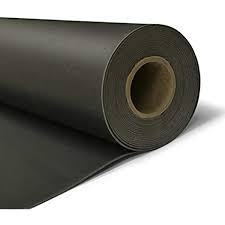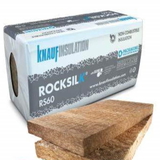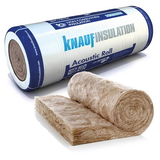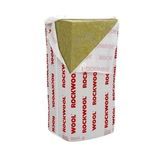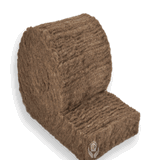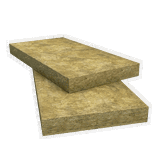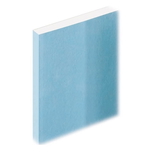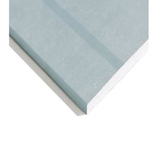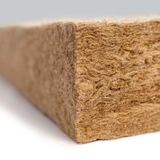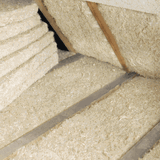- Blogs
- How To Soundproof Walls?
How To Soundproof Walls?

A calm, peaceful home is what you need to de-stress after a tiring day at work. However, relaxing becomes impossible especially, if you have noisy neighbours or kids screaming at the top of their voices. The only way out of this is to soundproof your home
Ideally, soundproofing works when you add mass to your walls. Mass, in the form of acoustic plasterboards, sound insulation batts, mass-loaded vinyl, resilient channels, and second layers of drywall can all help reduce noise.
By using a variety of materials and techniques, you can significantly reduce the amount of noise travelling through your walls.
If you’re unsure how to start soundproofing walls, consider the tips below. They will help you design a plan that meets your needs. Once you’ve got the plan in place, you can start adding soundproofing insulation or other soundproofing materials.
Adding Mass-Loaded Vinyl![acoustic insulation]()
Mass-loaded vinyl is a very good soundproofing material, and it’s easy to install. It stops airborne noise from travelling through walls and pipes. Before choosing a mass-loaded vinyl material, consider how the material will impact noise levels in the space.
Do you need to completely eliminate noise from your room or do you only need to muffle the noise? Then mass-loaded vinyl may be the perfect solution.
Mass-loaded vinyl is a flexible material, made of polyethylene and calcium carbonate, that adds mass to a wall. It is easy to use and can provide a significant soundproofing effect. Mass-loaded vinyl can also be used to add insulation to a room. It can be installed over drywall or can be added to a room. For maximum effectiveness, it’s best to use mass-loaded vinyl against studs and drywall.
Mass-loaded vinyl is a flexible material that is easy to install. It comes in big wraps that you simply roll out to cover the wall. You can mark where you want to add mass-loaded vinyl with a pencil. Then, you can cut it to the size you need.
Adding mass-loaded vinyl to soundproof walls will help prevent noise from reaching the rooms above and will soundproof your room.
Adding mass-loaded vinyl to soundproof your walls is easy and cheap. The material is easy to install and effective at blocking all sound frequencies. If you’re concerned about sound transmission through your walls, you can use acoustic curtains or panels in the space.
Mass-loaded vinyl and fiberglass panels can help you solve the noise problems in your space. The soundproofing material has numerous advantages, and it’s an ideal choice if you’re looking for a solution for your noise-prone room.
Adding Sound Insulation
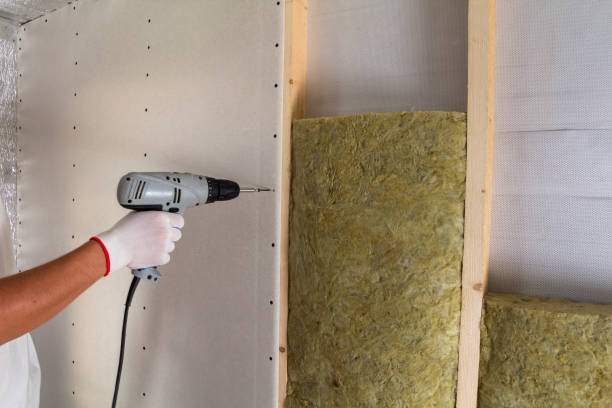 When considering soundproofing a wall, adding a layer of insulation can make a big difference. High-quality soundproofing insulation can help reduce sound and dampen vibrations. The best soundproofing material for walls is mineral wool, which is a very durable, easy-to-use and effective soundproofing solution.
When considering soundproofing a wall, adding a layer of insulation can make a big difference. High-quality soundproofing insulation can help reduce sound and dampen vibrations. The best soundproofing material for walls is mineral wool, which is a very durable, easy-to-use and effective soundproofing solution.
For soundproofing, mineral wool can be used in the form of acoustic insulation batts, which have a high density, thus perfect for all soundproofing applications. It is cost-effective and quite easy to install.
There are different types of insulation that can be used to soundproof a wall. Blown-in insulation is a foam-like material that is blown into the interior wall. This type of insulation is loose and absorbs vibrations to reduce the noise inside the room. It is also fire-resistant and non-toxic. Fibreglass is another common material for insulating walls. The advantage of fibreglass is that it dries quickly once it is blown into the walls.
Soundproofing walls can be accomplished without tearing out the drywall. Blown-in insulation is an effective method that doesn’t require removing any drywall. It is made up of low-density cellulose material that traps soundwaves.
Another way to soundproof walls is by creating a stud wall and insulating it with high-density insulation batts and acoustic plasterboards. Stud walls can be insulated using Rockwool RWA45, Knauf Rocksilk RS45, Rockwool Flexi, and other high-density batt insulation. You can then use acoustic plasterboards like Knauf Soundshield Plus or Knauf sound panel for drylining. Both sound insulation slabs and plasterboards are made with high-density materials that will effectively soundproof your room or wall.
Adding Resilient Channels
Soundproofing walls is easy when you add resilient channels to existing studs. These strips fit into studs at an angle and are fixed against the wall. They have flanges on the bottom and top that help prevent sound from traveling through them. The first step is to drill through the center of the stud. The intersecting surface should be at least 1/4″ thick. Then, use drywall screws to insert the resilient channels.
When adding resilient channels, install them on the side of the wall that is not being insulated. Be sure to check the placement of power outlets and light fixtures. If you’re adding channels to ceilings, lower the lights so that they don’t interfere with the resilient channel. The channel should be as close to the surface as possible without touching the outer structure. If the channels don’t allow the wall to flex, you might have shorted out the channels.
If you’re installing resilient channels on a ceiling, be sure to follow the manufacturer’s instructions. They should indicate what spacing the resilient channels should have. The typical spacing is 16 inches. Depending on the length of the walls, you can substitute a 13-mm wallboard at the bottom of the channel. Once the resilient channels are installed, make sure to use a magnetic drill bit. Finally, make sure to screw the channels into the studs.
Adding resilient channels to walls is an inexpensive alternative to sound isolation clips. However, this method is not as effective as the former. In addition, you might have to be careful with the installation of the resilient channels since improper installation could cause trouble. Furthermore, it can be problematic to hang paintings on the walls because the resilient channels will lose their acoustic properties.
Adding A Second Layer Of Drywall
Adding a second layer of drywall to a wall is an effective way to soundproof it. It should be applied with two-1/2” drywall screws, and the seams should be staggered. You may also want to use an acoustical sealant to seal the gap between the two layers of drywall. Once the wall is complete, it should be primed and painted.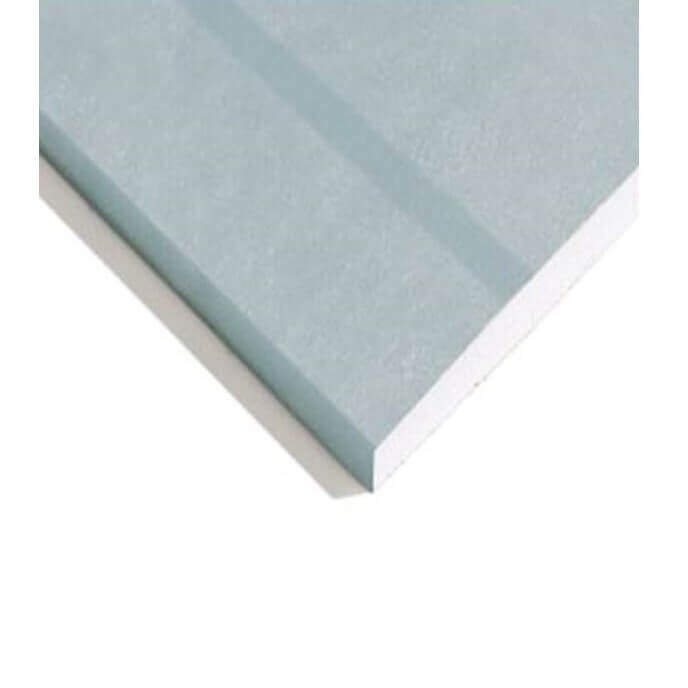
Using a damping compound is a great way to improve soundproofing walls. Apply it according to the manufacturer's instructions. Then install the second layer of drywall over the first one. Screw this second layer to the ceiling, and apply a third one if desired. In some cases, the third layer of drywall can increase the soundproofing capabilities of a room.
The first layer of drywall is acoustically-active. It is a lightweight, non-combustible material. In addition to this, it has a sticky quality. Therefore, it can prevent sound from travelling through hardwood studs. It is best to purchase a double layer of drywall to get the desired soundproofing effects. The extra layer of drywall adds more mass, which means it will absorb more sound. Knauf sound shield plus or Knauf Sound panels are best for these acoustic drywall applications.
You can use various materials for soundproofing walls. For instance, you can install MLV in between drywall layers. You can also use acoustic caulk to block cracks and gaps. Soundproof panels are also effective for improving sound quality and preventing sound from travelling beyond space.
Adding Acoustic Isolation Tiles
Adding acoustic isolation tiles to a wall can be a simple and effective way to soundproof a room. Instead of putting up a huge concrete slab, you can install acoustic isolation tiles. They will help isolate sound and can be installed as an inexpensive option. They can also be used to soundproof a room’s ceiling, walls, and floors.
The best acoustic isolation material is a layered composite fabric. These panels are thin and soft and are installed on internal walls. They are effective for blocking airborne sound and preventing noise from penetrating the walls.
The acoustic isolation tiles you install on the walls are similar to acoustic panels. They come in a variety of colours and sizes, making them a simple solution to improving the acoustics of any space. Another benefit is that they create a finished ceiling and are a simple solution for soundproofing a room. As they cover a large surface area, they also help reduce noise and echo.
Soundproofing walls can be done on any level. Soundproofing walls can be achieved using acoustic caulk for walls that are exposed to sound. You can also add acoustic deadening sound tiles to walls to further soundproof them. But these types of tiles are typically reserved for recording studios.
In Conclusion:
You will reap the maximum benefits by using soundproofing insulation in your room. Acoustic insulation batts and sound insulation plasterboards not only insulate your home and reduce energy bills but also keep the sound out, leading to a quieter and more comfortable home.
For trade-quality acoustic insulation batts and sound insulation rolls, please visit Buy Insulation online. We store sound insulation batts like RWA45 and Rocksilk RS45 at a low cost. In addition to these, we are also the UK’s leading insulation suppliers of ductwrap, valve insulation jackets, loft insulation rolls and much more.

Samuel Hitch
Managing Director
Buy Insulation Online.
Leave A Reply
Your feedback is greatly appreciated, please comment on our content below. Your email address will not be published. Required fields are marked *
